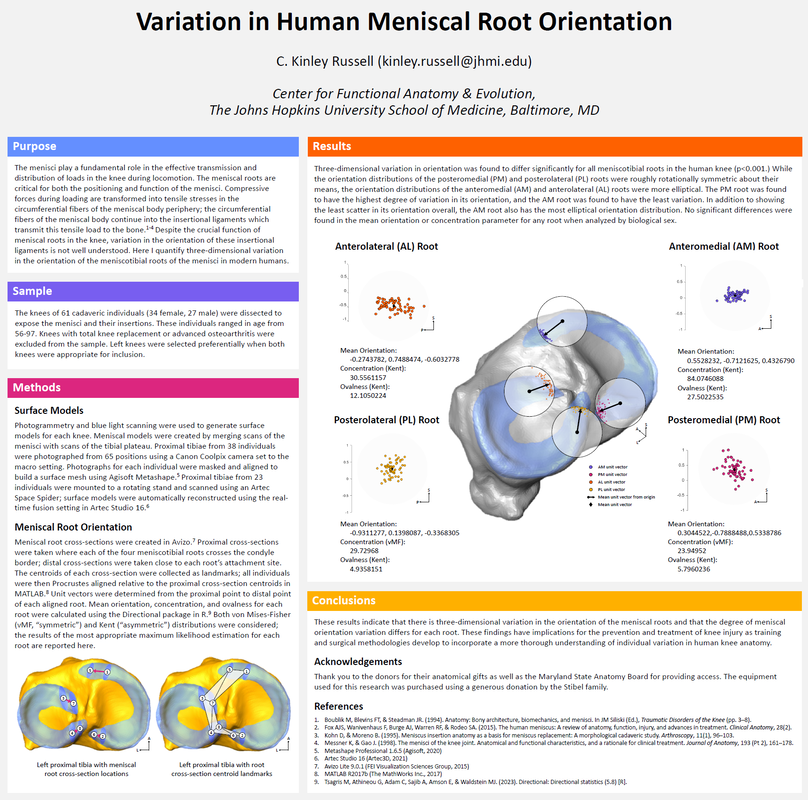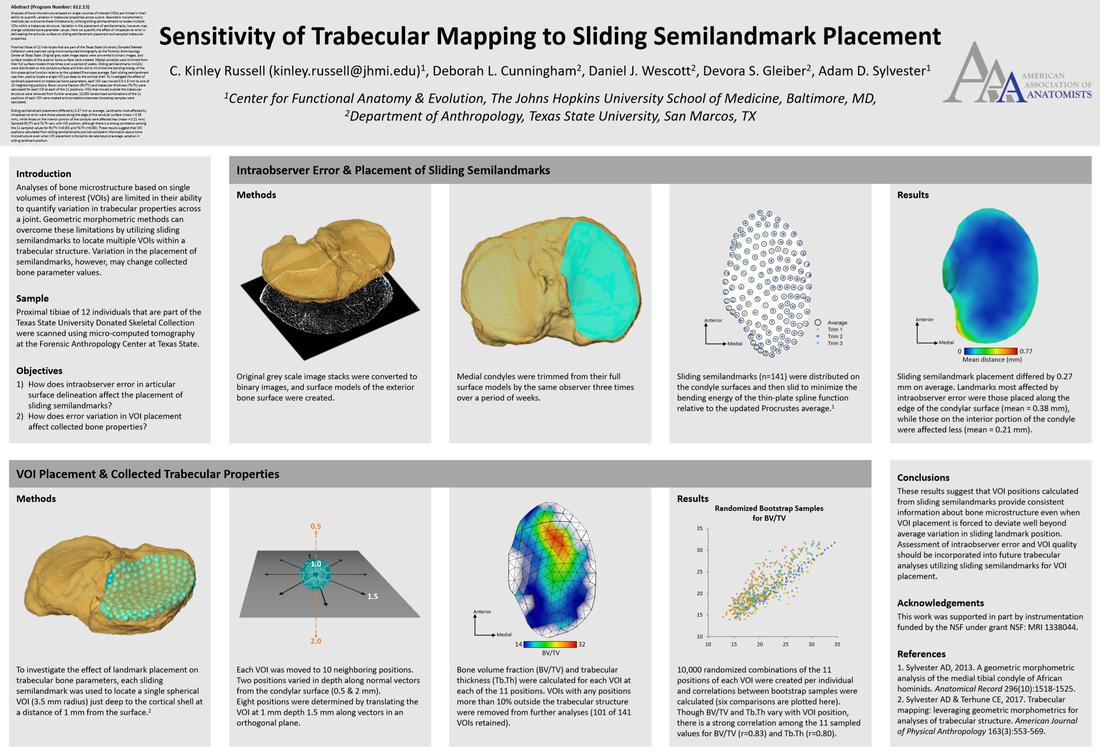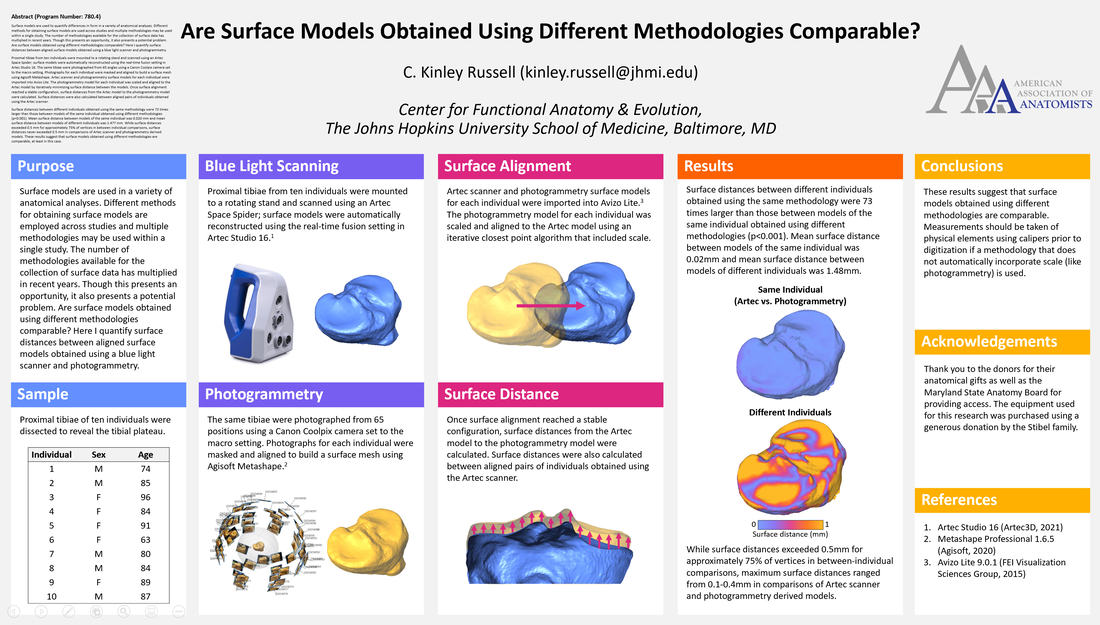My research seeks to assess intraspecific variation in postcranial traits used to interpret locomotor mode, posture, and mobility in the human past and the hominin fossil record.
My goal is to improve the value of traits considered diagnostic of bipedalism by developing quantitative methods that adequately take into account variation.
Current projects include:
I am also editing my MA thesis, Size-Related and Demographic Effects on the Morphology of the Lateral Meniscal Notch of the Proximal Tibia, to submit for publication. In the future, I plan to begin gathering data on knee insertion anatomy in non-human primates.
My goal is to improve the value of traits considered diagnostic of bipedalism by developing quantitative methods that adequately take into account variation.
Current projects include:
- Determining the degree of variation in the presence, size, and orientation of human meniscal insertions
- Analyzing the effects of soft tissue variation on the bony morphology of the human knee
- Mapping trabecular properties across the tibial plateau in individuals with different body masses
- Determining the sensitivity of trabecular mapping to changing VOI size, depth, and location
- Documenting & describing aye-aye hand neurovasculature with comparison to other primates
I am also editing my MA thesis, Size-Related and Demographic Effects on the Morphology of the Lateral Meniscal Notch of the Proximal Tibia, to submit for publication. In the future, I plan to begin gathering data on knee insertion anatomy in non-human primates.
Poster Presentations
|
American Association for Anatomy
Annual Meeting (Anatomy: Form & Variation) March 27, 2023 American Association of Anatomists at Experimental Biology,
Annual Meeting (Biological Anthropology) April 8, 2019 |
American Association for Anatomy at Experimental Biology
Annual Meeting (Imaging) April 5, 2022 American Association of Physical Anthropologists,
Annual Meeting (Human Skeletal Variation, Function, and Biomechanics) April 13, 2018 American Association of Physical Anthropologists,
Annual Meeting (Human Functional Studies) April 15, 2016 |
MA Thesis: Size-Related and Demographic Effects on the Morphology of the Lateral Meniscal Notch of the Proximal Tibia
The lateral meniscal notch of the proximal tibia is often utilized to interpret locomotor behavior and determine the taxonomic assignment of fossil hominin postcrania. However, not all humans possess a meniscal notch, and this study addresses how the size and presence of this feature is influenced by body size, sex, age, and ancestry. Though Dugan and Holliday (2009) discuss variability in this feature, previous work has failed to address the ways in which the posterior attachment of the lateral meniscus is influenced by body size and demography. In this thesis, I introduce quantitative methods for assessing the size and dimensions of the lateral meniscal notch relative to the tibial plateau in a large sample of modern humans spanning the range of human body size. Individuals who lack or have a small meniscal notch area (<3 mm2) are significantly smaller in body size than those with larger notches. Those who lack or have a small notch are also significantly more likely to be female, and this difference is not explainable by body size alone. This quantitative method for analyzing the lateral meniscal notch will decrease ambiguity in the interpretation of the morphology of the proximal tibia. My results also have implications for the interpretation of the knee morphology of Plio-Pleistocene hominins, and caution should be taken in interpreting the locomotor behavior of small-bodied, female hominins on the basis of absence of the meniscal notch.




